Complex lab facility (Part 2): Occluding objects and air absorption
These results were first presented at DAGA conference in 2025. Full paper is available here: https://doi.org/10.71568/dasdaga2025.490
The first part of the study looked at an empty room with a medium long reverberation time. In this study we increase the complexity in following ways
- Complexity of the model is increased. Rigid objects, in this case stacks of bricks, are added in various locations in the same room as used in the previous study
- The upper limit of the bandwidth is increased from 8kHz in the previous study up to 12kHz.
- The full broadband range is simulated a single driver source, as opposed to the dual driver sources used in the previous study
- The effect of air absorption is added in post processing
- Binaural response measured using a HATS 5128 mannequin with high frequency ear couplers.
The simulation results are generated using the Treble SDK and utilizing the boundary velocity source feature and the DRTF rendering feature using a measured HRTF of the the HATS.
The geometry
The measurement room is a 80m3 shoebox shaped room with a concrete boundary. The reverberation time is controlled with rockwool absorbers on the walls to have around 0.6s average T20 time. Finally, multiple rigid 60x60cm concrete tiles are stabled in various shapes around the room. The idea is to only introduce geometic complexity without increasing the complexity of the boundary conditions. The measurement room and the digital twin model are presented in the following images.
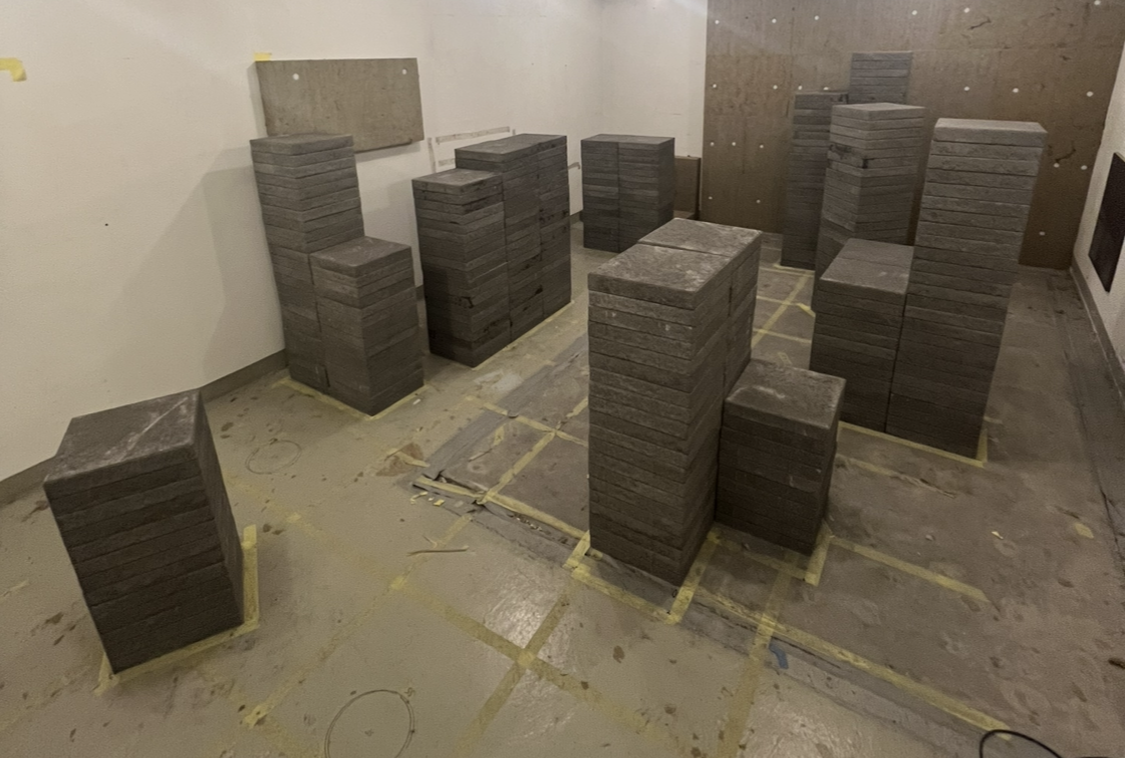
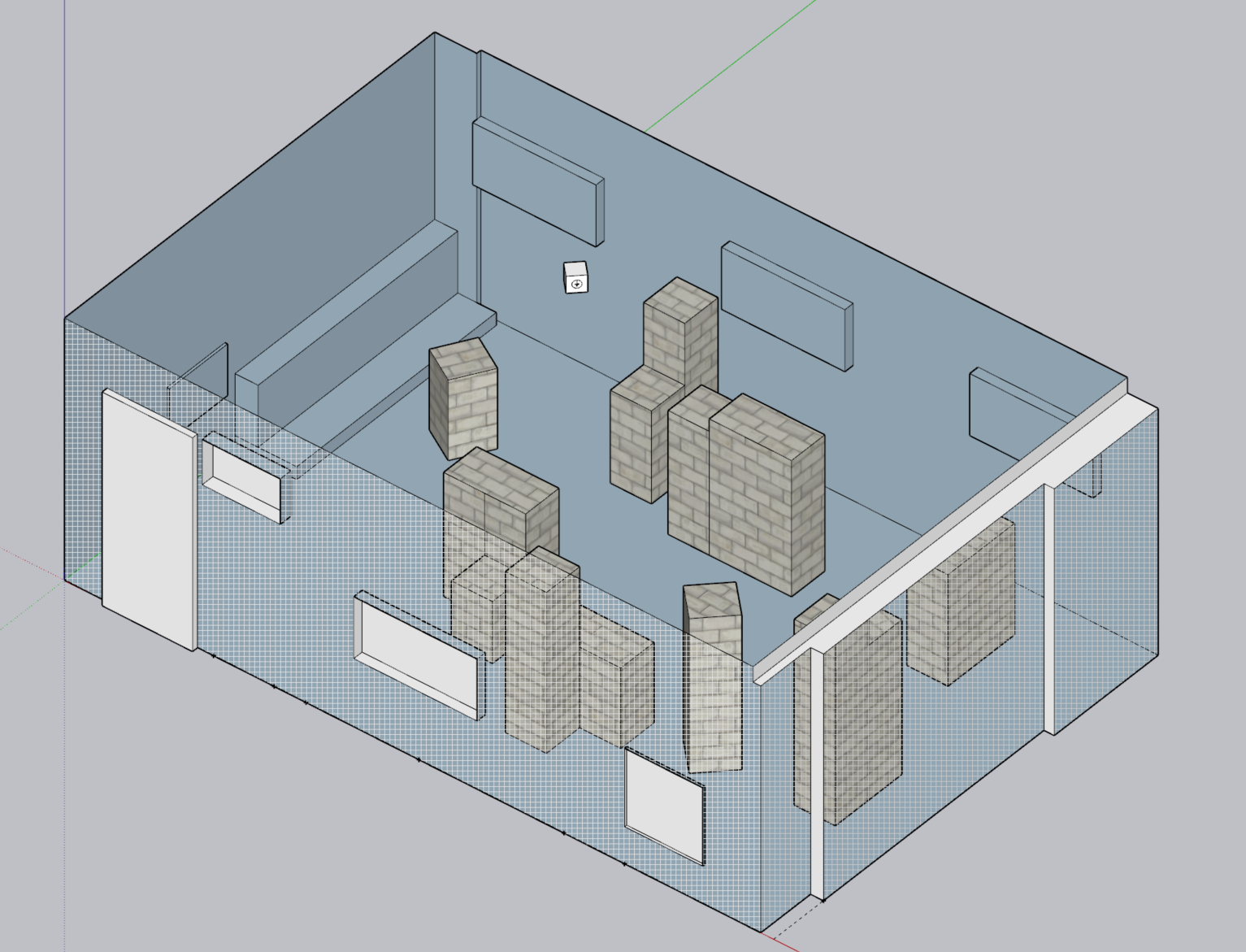
The source
The source used is an Avantone MixCube single driver loudspeaker, modeled as a boundary velocity source, approximating the membrane as a piston. The directivity patterns match fairly well up to 12kHz for most angles, as presented in the following plot.
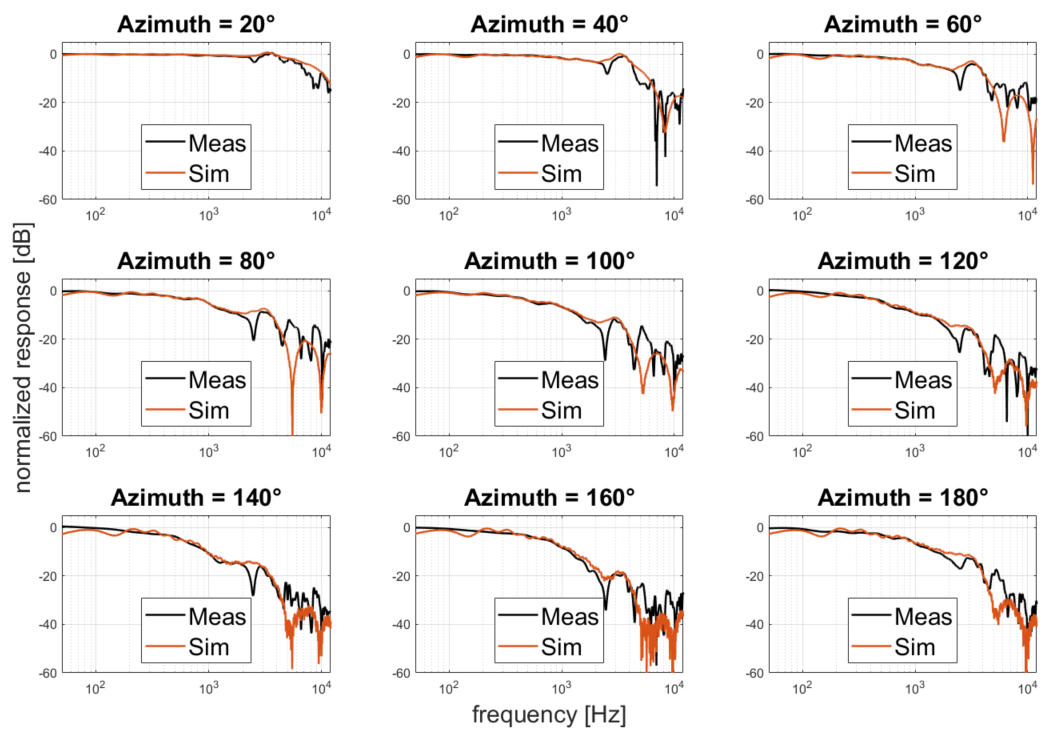
The receiver
The binaural response in the room is recorded using a high Frequency HATS Type 5128 mannequin with ear couplers inside the ears. The simulation uses an open sphere array with over 1400 microphones. By using the measured anechoic HRTF of the HATS together with 32nd order ambisonics encoding, the effect of the HATS is placed in the simulated sound field in post processing.
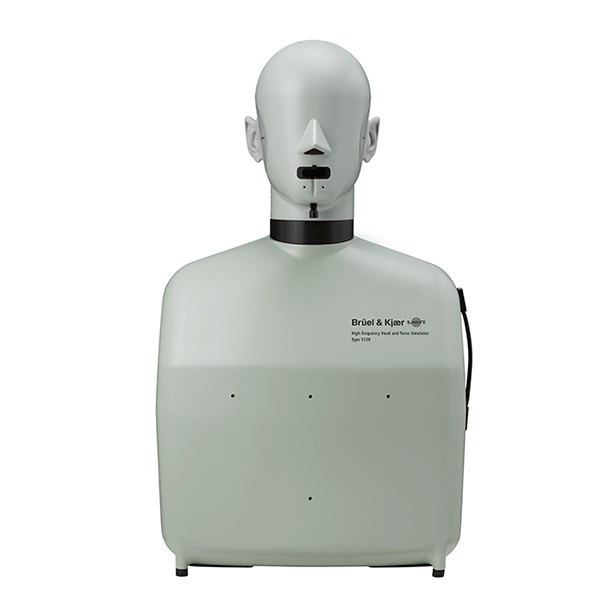
Post processing
The air absorption is essential for higher frequency bands and makes the simulation sound more realistic. Air attenuation factor is calculated according to the ISO 9613-1 standard. The attenuation is applied using continuous Morlet wavelet transform as described in a paper "A scale model study of parallel urban canyons" by Hornikx et al, 2008.
The results
Presented is the binaural response comparison between the simulation and the measurement. As seen the results match quite well, both in the time and frequency domain. The head shadow can be seen in the amplitude difference bewteen the left and right ear. The low frequency room modes are well captured, as well as the high frequency details, such as the 3kHz ear coupler resonance.
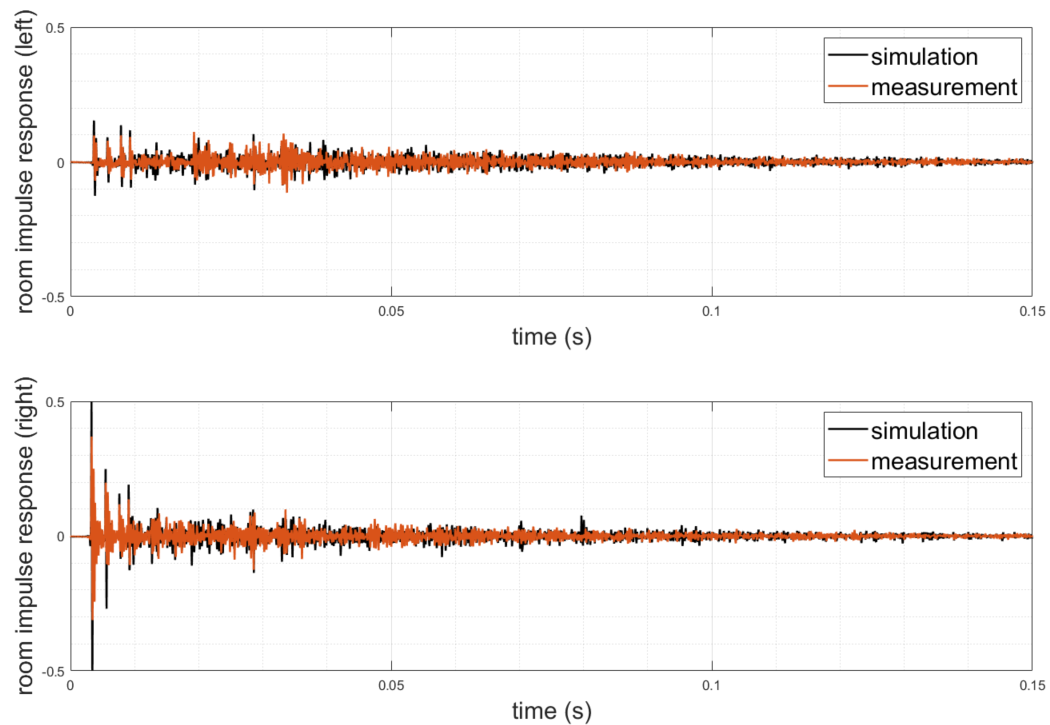
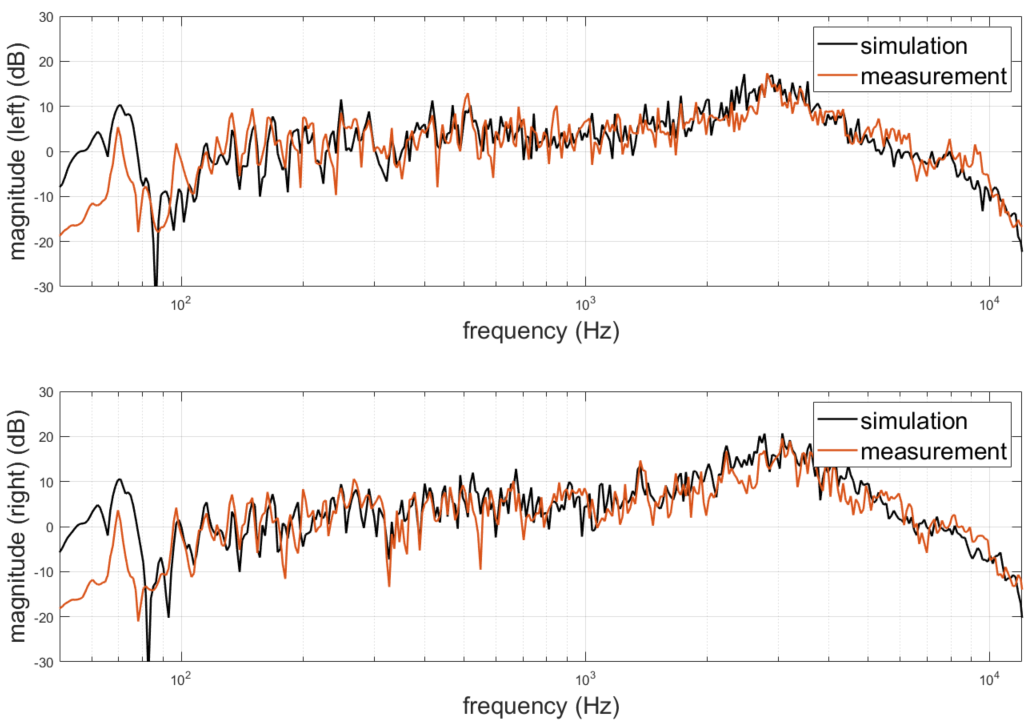
The conclusion
This study has demonstrated a high level of comparability between measurements and simulations in a complex geometry scenario. It has proved that simulations can replace measurements for complex scenarios and devices. This opens up a plethora of different practical use cases in development and testing of audio devices. This includes application such as optimizing microphone array configuration on an audio device. Calculating SNRi for an audio speech enhancement algorithms in a realistic scenarion. Instead of using a measured HRTF, the HRTF or DRTF could also be simulated in the Treble SDK. This would allow a full virtual testing of a design before even building the first prototype of the device.